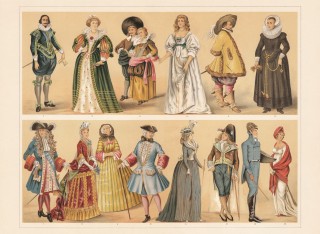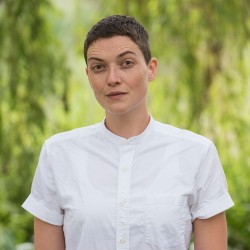
Dr Lena Mattheis (they/she)
Academic and research departments
Literature and Languages, SGS: Sex, Gender and Sexualities Research Centre, Mobilities in Literature and Culture Research Centre, Institute for Sustainability people.About
Biography
My academic journey started in Germany, where I received B.A. and M.A. degrees in Anglophone studies, French literature, and media studies, before starting my doctoral research on translocal city novels at the University of Duisburg-Essen. This literary urban research then took me to the University of Namibia, where I briefly taught and conducted research, and sparked my enduring interest in maps and alternative mappings. After completing my PhD in 2019, I started several research projects in queer studies, among them a research and teaching podcast called Queer Lit. I am very pleased to now be a lecturer at the University of Surrey.
Areas of specialism
Sustainable development goals
My research interests are related to the following:

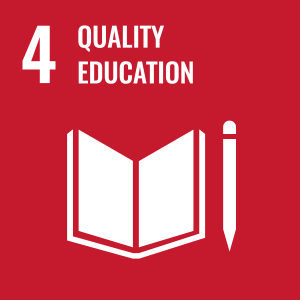
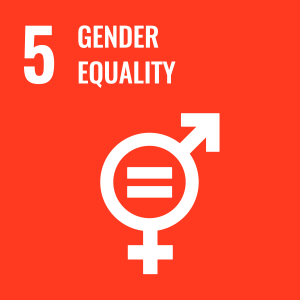

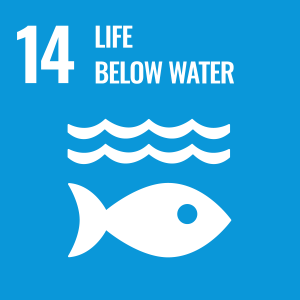
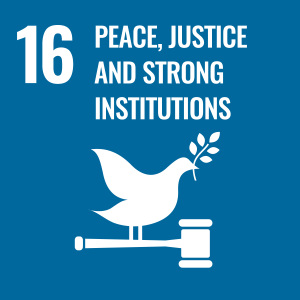
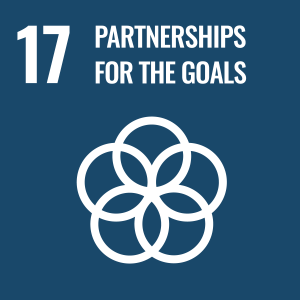
Publications
How does poetry map its own space? How is place constructed in and through poetic language? While there is an abundance of research on topographical poetry, most of it focuses on (maps of) real-world referents. I would like to propose an approach that, rather than dealing with the concrete place and its geographical mapping, looks inward and schematises how language and form are used to create the spatial imaginary in which a poem takes place. Drawing on examples from Jo Shapcott's collection Of Mutability (2010) and Jackie Kay's Bantam (2017), I will investigate which strategies poems use to build a poetic space (somewhat analogous to a narrative setting) in which its actions or emotions can unfold. I will focus on tracing movements as well as deictic elements, since both create spatial relationships and are archetypal to the genre of loco-specific poetry. Both strategies (movement and deixis) can be abstracted and easily visualised to create sketch maps of poetic space that help us understand how the text constructs its own spatiality. Although the spatial turn in literary studies has sparked similar investigations in narratology, the ways in which prose texts map space seem to be quite different from the way poetic space functions. I therefore believe that a more schematic approach to poetic space can provide fruitful abstractions and aid us in better understanding the complex interplay of mappings, space and poetry.
27 unnumbered and separately bound chapters delivered in a cardboard box in apparently random order2 and ranging between a mere 10 lines to 12 pages in length – this is B. S. Johnson’s 1969 novel The Unfortunates. The Unfortunates is the interior monologue of an ambitious if unsuccessful writer who has to make a living as a football reporter, sent to report a match in an unnamed city3 – recognizable as Nottingham – and who, only as he leaves the train, realizes that this is a city he knows well as the city in which, as a young writer, he had spent a lot of time with his then best friend, Tony, an aspiring literary scholar, who had died of cancer at the age of 29 a few years before the time of the novel.4 The entire narrative then oscillates between the narrator’s rendering of the hours spent in the city before, during and after the match and analepses to time spent with Tony, memories frequently triggered by visual cues during the city walk. Thus, a pub on a corner may remind the narrator of time spent there with Tony or, in a more erratic movement of the mind, the built environment of the train station reminds him he is in Nottingham, which, in turn, conjures up Tony’s emaciated face, as happens in the opening passage quoted above.
The essay sketches a typology of layered representations of urban history based on the question of how texts activate different strata beneath the cityscape. In describing these layers, we are guided by Walter Benjamin's concept of superposition or 'Überdeckungstransparenz' (as formulated in the Arcades Project), a specific mode of perception which allows for the simultaneous awareness of different temporal layers. What is central to our endeavour is the structural analogy of 'city' and 'text' – both in the sense of reading 'the urban landscape as a form analogous to that of a literary composition' (Sharpe and Wallock 1987: 11) and, conversely, of studying 'how a text can function like the city in its layering of meanings' (Gurr 2015: 24). We further take our cue from Martindale's distinction between 'diachronic and historical' approaches, allowing for a clear distinction between 'past' and 'present' on the one hand, and 'archaeological and synchronic' approaches layering different periods of time so as to suggest a timeless, simultaneous 'presence of the past' (sensu Eliot) on the other hand (Martindale 1996). We propose a matrix, as it were, of temporal and spatial 'directions' of layering, distinguishing between retrospective, simultaneous and prospective temporal superpositions and 'co-spatial' (layerings of different temporal strata of the same city) as opposed to translocal (overlay of different cities and spaces) spatial superpositions of different cities. We thus seek to provide a more nuanced outline of the textual strategies used to access, make visible (or at times construct) buried layers of spatialised, palimpsestuous urban memory.
Nonbinary narratives are not just defined by genderqueer narrators or focalisers; they also move beyond binaries in the way they shape form and language. The study of nonbinary narratives therefore necessitates nonbinary thought and methods. In this essay, I therefore identify some of the ways in which texts can be read and analysed in a nonbinary manner. Building on queer, feminist and trans narrative studies, and on Kanaka Maoli and Two-Spirit understandings of what constitutes binary-defying narratives, I present an overview of current nonbinary narrative research. In order to illustrate what a nonbinary approach to narration might look like, I present three brief case studies of the use of singular ‘they’ in Rae Spoon’s novel Green Glass Ghosts (2021), the nonbinary form of Sara Taylor's The Lauras (2017) and genre transgressions in Joshua Whitehead's Making Love with the Land (2022).
https://listenqueer.co.uk/ListenQueer is a personal tour guide through the rich LGBTQIA+ history of several cities, bringing to life forgotten people. Designed to be accessible, the app can be used on site, as a walking tour guide, or to explore queer history from anywhere in the world.ListenQueer takes users in the footsteps of our queer, trans and nonbinary forebears, mapping their paths onto present-day spaces. Users can follow a guided walk listening to the audio descriptions and following directions provided in the app, but the recordings work in any sequence and from any location. ListenQueer provides an immersive experience to listeners at home or live on the street.
This essay discusses printed, digital, and oral forms of twenty-first centurypoetry with a particular focus on interaction. Considering poetry across multimodalplatforms, from YouTube to Instagram to Twitter, modes of reader- and author-directedinteraction are observed. After outlining the decolonial and global nature ofcontemporary poetry and highlighting the works of some influential voices in poetrytoday, the essay zooms in on the ways in which poetry, oral poetry in particular, travelsacross digital platforms. Focusing on the work of spoken word artist Andrea Gibson,the essay traces how their poem “Orlando” – a protest piece about the 2016 massmassacre of queer Latinx people at the Pulse nightclub in Orlando – changes andadapts as it moves across different performance stages, to recording, to print, andthrough social media.
https://listenqueer.wordpress.com/ ListenQueer is an app that invites you to go on a date with queer history by telling you which queer, trans or nonbinary person would have been close by in the 18th century. Listen to conversations about our forebears, follow them on a step-free walk through the City of London, or listen to the immersive recordings from home.The prototype for the ListenQueer app is currently being developed.
This article seeks to explore how nonbinary, ambiguous, and gender-neutral pronouns are used for gender nonconforming characters in seventeenth-century British literature. Focusing on a particularly interesting time for gender nonconformity in British literature, the article traces queer pronoun use in three poems by Aphra Behn and in the prose narrative Assaulted and Pursued Chastity (1656) by Margaret Cavendish. While the history and grammaticality of singular they and other gender-neutral pronouns has been explored in several linguistic studies, the aesthetic value and historicity of gender-neutral language in literature is still frequently questioned. An examination of what is only a small sample of literary texts that consciously play with unstable pronouns, ambiguously gendered characters , and gender nonconforming language emphasizes the artistic and creative dimension of nonbinary and gender-neutral pronouns. The fact that we find ambivalent pronouns and gender nonconforming characters at the core of many plays, poems, and novels in literary history also shows that readers have been able to comprehend and empathize with queerly gendered characters and pronouns for centuries. There are many reasons why a literary studies approach that focuses on pronouns as elements of form can help us gain new perspectives on some of the current, frequently transphobic and racist, debates on gender-neutral language. First, despite supposed grammatical or aesthetic shortcomings, gender-neutral pronouns, including singular they, have been in use, in literary as well as quotidian discourse, for centuries. Through an exploration of queer(ed) pronoun use in seventeenth-century British literature, this essay seeks to show how nonbinary, gender-neutral, and ambiguous pronouns WSQ_Nonbinary_interior_v2.indd 44 WSQ_Nonbinary_interior_v2.indd 44
In September 2016, an international group of young scholars came together at the University of Duisburg-Essen, Germany, to discuss their research projects in the context of the workshop Voices from the Margins: Societal Change and the Environment in Poetry. Not yet entirely expecting how turbulent the next few months would be in terms of poetry and protest, but very much aware of the increasing relevance of both fields and the hybrids they engender, we wanted to provide a platform to discuss poets who engage with social and environmental issues. The main focus here were poets who write from a position of marginality, be that geographically, socially, economically or on the basis of race, gender or sexual orientation. The participating scholars were also interested in the margins of canonization and therefore presented the works of authors who receive less attention due to their location, the issues they discuss or the media of publication they choose. Intersections of these different facets of the term ‘margin’ were central to the workshop and shape our understanding of the concept. As editors, we believe that poetry written from marginalised perspectives creates a collage of defining moments, thoughts and feelings, and that those add to the visibility of key issues and changes in contemporary societies. Following Ashcroft, Griffith and Tiffin, we are particularly interested in ‘discourses of marginality … [that] intersect in a view of reality which supersedes the geometric distinction of centre and margin and replaces it with a sense of the complex, interweaving, and syncretic accretion of experience.’ This is the premise under which the selected papers in this special issue investigate contemporary poetic responses to societal and environmental transformations.
Mattheis explores the possibilities contained in urban spaces by creating and analysing a variety of maps based on Tendai Huchu’s translocal Edinburgh novel The Maestro, the Magistrate & the Mathematician (2015). In addition to an examination of the translocality (the layering of two or more distinct spaces) that shapes and forms a rapidly increasing number of contemporary city novels, Mattheis questions the rather metaphorical mapping lexicon that is used extensively in urban, literary and cultural studies. She focuses instead on the actual physical locations and trajectories referenced by a text. Using maps of these spaces, Mattheis then provides an insight into how translocally perceived urban places are layered over memories and immediate walking experiences. Mattheis’ approach is informed by Ayona Datta and Katherine Brickell’s use of the term translocal, but also by Tania Rossetto’s thoughts on maps and literature, and Franco Moretti’s approaches to abstraction.
Translocal novels—novels that are set in two or more distant places, which are layered or blended—are more often than not urban texts, since the city is, by nature, a site where a multitude of chronotopes interact. This article therefore examines structural analogies between translocal time(s) and urban spaces, and explores how the versatile nature of the city allows writers to project a variety of other spacetimes onto its surface. Both the spatialisation of time and the temporalisation of space in translocal narratives will be of interest. While a number of texts will be taken into account, Xiaolu Guo’s I Am China and Tendai Huchu’s The Maestro, the Magistrate & the Mathematician will serve as main examples for the narration of translocal urban time.
Cities are translocal. This might sound simple – because it is. By merely existing, cities create connections across, through and beyond local spaces and places. A layering of distant local environments, or of experiences of places, is therefore at the heart of every definition of citiness. Whether that be in literature or in the lived environment, close connections between locations that are seemingly unlike, as well as dense layers of multilocal, international and global histories, shape the urban experience. From the urban palimpsest (see Kronshage et al.; Gurr, Charting Literary Urban Studies) to the global city (see Sassen, Deciphering the Global and The Global City), immediate links between and through various locales suffuse urban theory and city literature as much as the actual cityscapes.
Queer Lit is a podcast about LGBTQIA+* literature and culture. In each episode, literary studies researcher Lena Mattheis talks to an expert in the field of queer studies. Topics include lesbian literature, inclusive pronouns and language, gay history, trans and non-binary novels, intersectionality and favourite queer films, series or poems.
Translocality in Contemporary City Novels responds to the fact that twenty-first-century Anglophone novels are increasingly characterised by translocality—the layering and blending of two or more distant settings. Considering translocal and transcultural writing as a global phenomenon, this book draws on multidisciplinary research, from globalisation theory to the study of narratives to urban studies, to explore a corpus of thirty-two novels—by authors such as Chimamanda Ngozi Adichie, Dionne Brand, Kiran Desai, and Xiaolu Guo—set in a total of ninety-seven cities. Lena Mattheis examines six of the most common strategies used in contemporary urban fiction to make translocal experiences of the world narratable and turn them into relatable stories: simultaneity, palimpsests, mapping, scaling, non-places, and haunting. Combining and developing further theories, approaches and techniques from a variety of research fields—including narratology, human geography, transculturality, diaspora spaces, and postcolonial perspectives—Mattheis develops a set of cross-disciplinary techniques in literary urban studies.
Additional publications
Monograph
Mattheis, Lena. Translocality in Contemporary City Novels. Palgrave Macmillan, 2021.
Editorship
Mattheis, Lena, and Lioba Schreyer, eds. Voices from the Margins: Societal Change and the Environment in Poetry. Special Feature in Transnational Literature 10.2 (2018). Available OA.
Essays
Mattheis, Lena, and Jens Martin Gurr. “Superpositions: A Typology of Spatiotemporal Layerings in Buried Cities.” Buried Cities. Special Feature of Literary Geographies. 7.1 (2021). 5-22. Available OA.
Mattheis, Lena. “Possibilities of Translocal Mapping in Tendai Huchu’s The Maestro, the Magistrate & the Mathematician.” Literatures of Urban Possibility. Eds. Lieven Ameel, Markku Salmela. Palgrave Macmillan, 2021. 137-163.
Mattheis, Lena. “Time in the Translocal City.” Time, the City, and the Literary Imagination. Eds. Anne-Marie Evans and Kaley Kramer. Palgrave Macmillan, 2021. 121-134.
Mattheis, Lena. “A Brief Inventory of Translocal Narratability: Palimpsestuous Street Art in Chris Abani’s The Virgin of Flames.” Narrative 26.3 (2018). 302-319.
Mattheis, Lena, and Lioba Schreyer. “Listening to the Margins: An Introduction.” Voices from the Margins: Societal Change and the Environment in Poetry. Special Feature in Transnational Literature 10.2 (2018). Available OA.
Mattheis, Lena. “Tendai Huchu.” The Literary Encyclopedia. First published 13 September 2016
[http://www.litencyc.com/php/speople.php?rec=true&UID=13763, accessed 14 September 2016.]
Accepted for publication
Mattheis, Lena. “Translocality in City Literature.” Companion of Literary Urban Studies. Ed. Lieven Ameel. Routledge. Forthcoming.
Mattheis, Lena and Jens Gurr. “Routine vs Event: Media, Memory and the City in B.S. Johnson’s The Unfortunates.” Media, Memory and the City. Special issue of andererseits: Transatlantic Yearbook of German Studies. 2021.
Mattheis, Lena. “Poetic Space: Mapping Out How Poetry Takes Place.” Mapping Space; Mapping Time; Mapping Texts. Eds. Sally Bushell and Rebecca Hutcheon. Special Issue in Literary Geographies. Forthcoming.
Submitted
Mattheis, Lena. “'What if this time we were the ones that didn’t get it?' Poems about COVID-19 and HIV/AIDS" Journal of Medical Humanities. Submitted.
